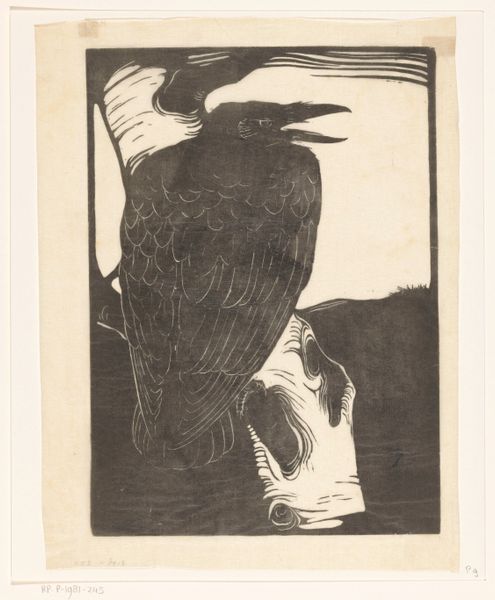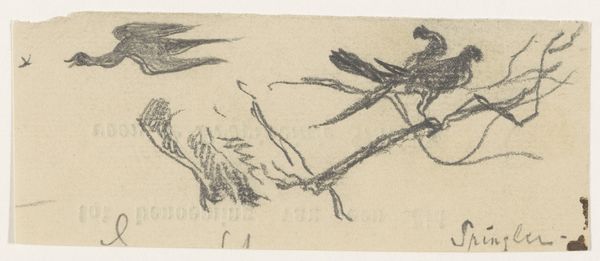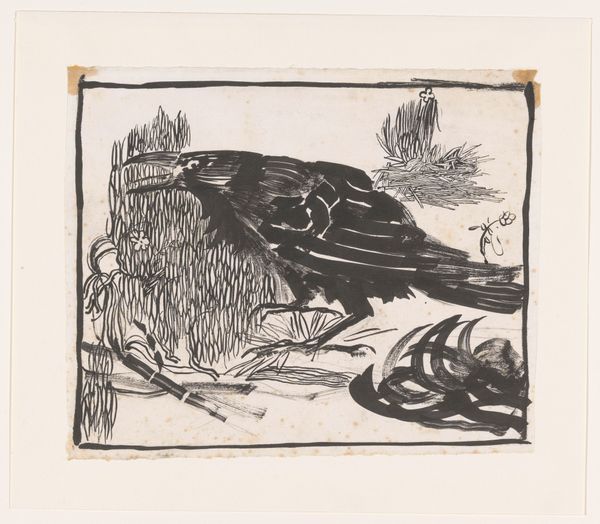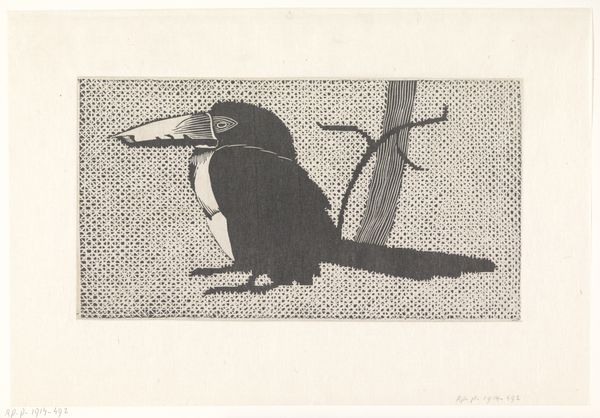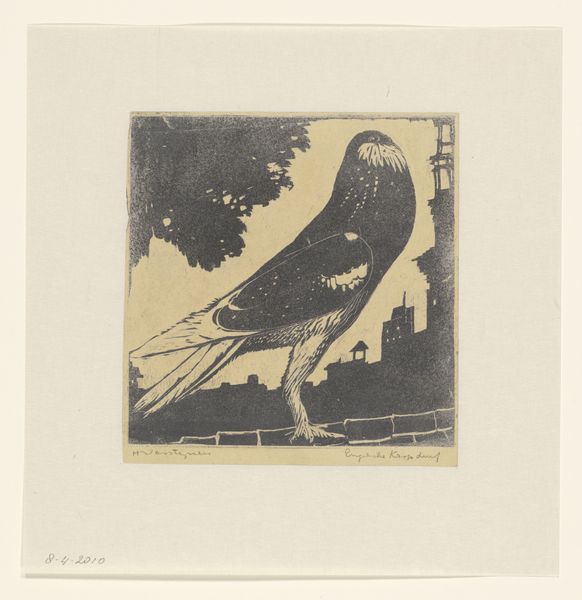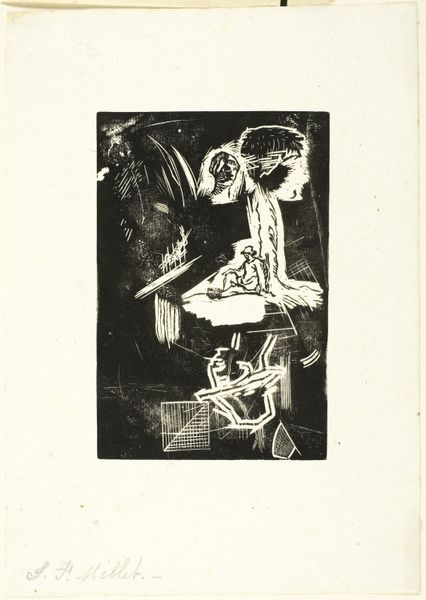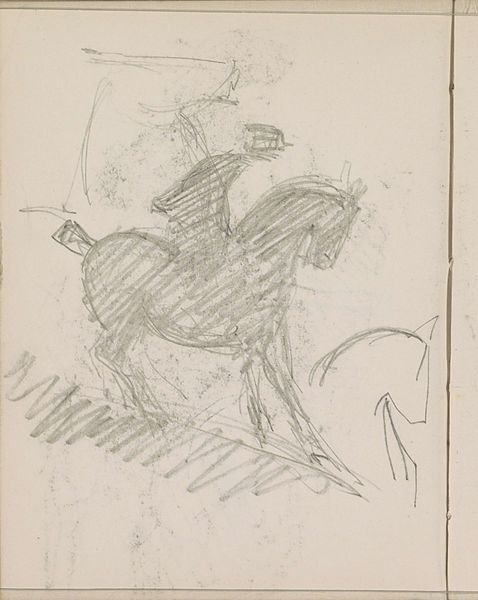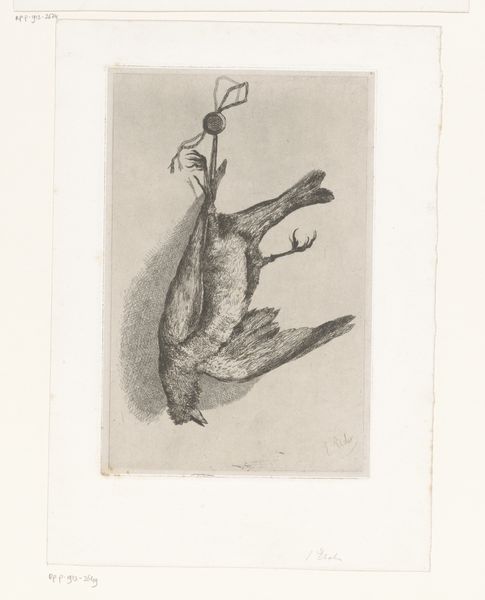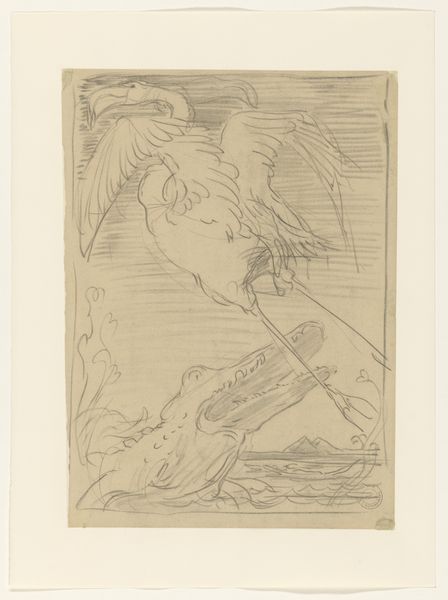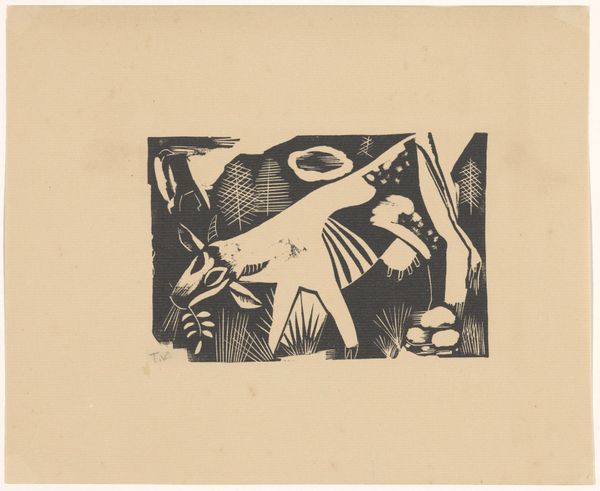
Dimensions: height 278 mm, width 227 mm
Copyright: Rijks Museum: Open Domain
Editor: This is "Two Birds on a Branch" by Janus de Winter, created sometime between 1892 and 1951. It appears to be a woodcut print, maybe also a pen sketch. It has such a striking graphic quality! What’s your take on this piece? Curator: Well, considering it's a woodcut, I'm immediately drawn to the process itself. Think about the labour involved in carving away at the wood to create this image. What kind of tools did de Winter use? How did the material, the specific type of wood, dictate the marks he could make? The strong contrast isn't just aesthetic; it speaks to the physical act of removing material. Editor: That's a perspective I hadn't considered! I was focused on the image of the birds, how they almost seem to be observing something. Curator: But even the symbolism you're noticing is tied to production. Birds as a subject were popular in prints for mass consumption. Were these prints meant for decoration in working-class homes? Did their accessibility challenge traditional notions of art ownership? We have to think about the intended audience and the artwork's place in the broader economy of images. Editor: So, it's not just about the birds themselves, but who was buying and viewing images of birds like these? How does the choice of woodcut, a relatively accessible medium, contribute to the artwork's message? Curator: Precisely! And even within the symbolism of "birds," different species carry different connotations. Considering this work was created during a time of social change, were these birds chosen intentionally to represent freedom or perhaps a yearning for something more among the working class? Editor: It is incredible to think how a simple image can carry a big impact when we begin to look into its production methods. Thank you! Curator: And to me, it is intriguing how seemingly mundane objects can uncover powerful truths when their mode of fabrication and distribution is analyzed in light of materialist concerns.
Comments
No comments
Be the first to comment and join the conversation on the ultimate creative platform.
